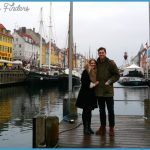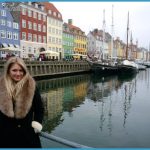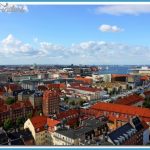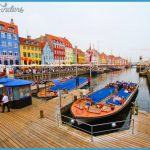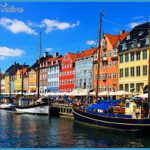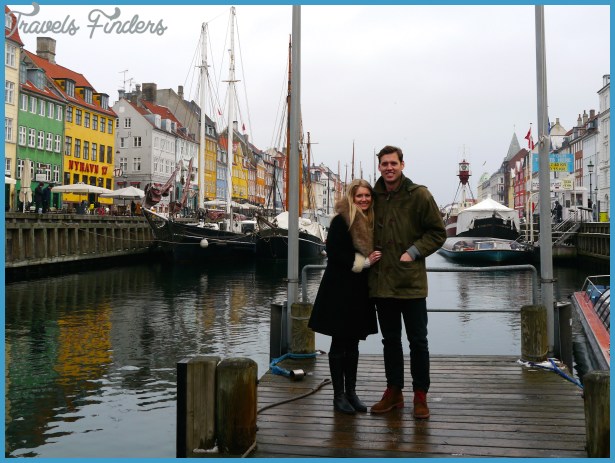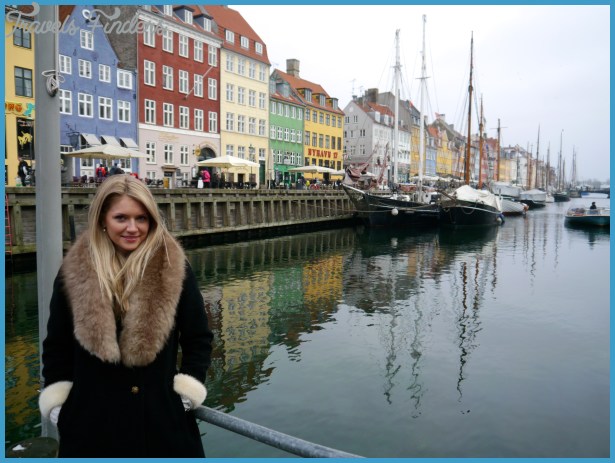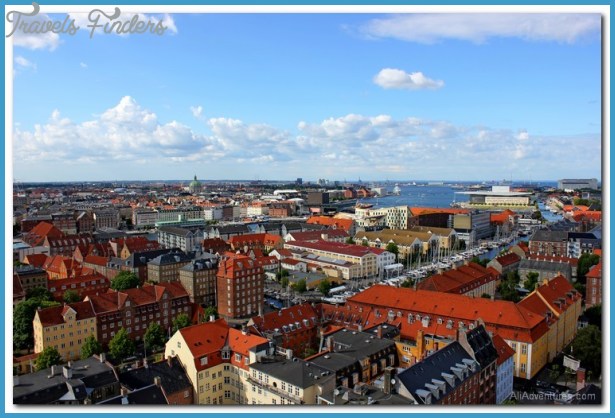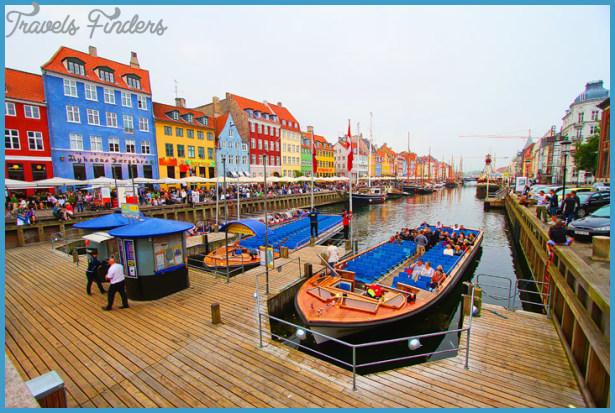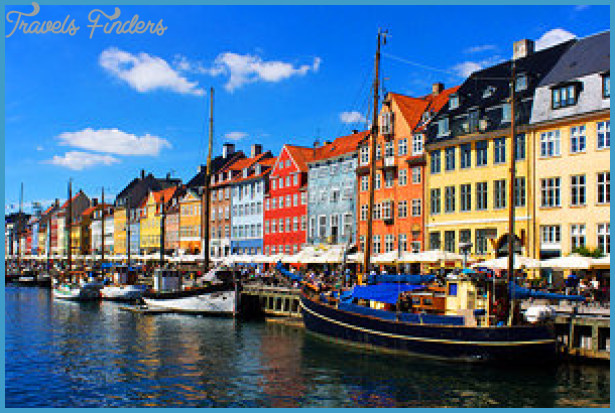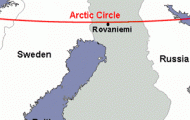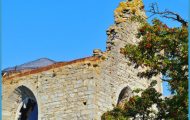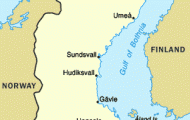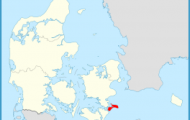The oldest parts of the Citadel (Kastel-let), formerly known as Frederikshavn Citadel, date from 1625. When Denmark lost its possessions E of the 0resund (now southern Sweden) in 1658 and Copenhagen thus became a frontiertown, the fortifications of the Citadel were strengthened. The buildings within the Citadel have been preserved, including its two handsome gates. In the large park adjoining are the Freedom Museum, commemorating the Danish Resistance movement against the Nazis (1940-5), the elegant English Church (St Alban’s) and the Gefion Fountain (1908), which shows the goddess Gefion with her oxen ploughing the island of Zealand out ofthe soil of Sweden. Beyond the fountain is Langelinie, with the famous bronze figure of Hans Andersen’s Little Mermaid (Den lille Havfrue) by Edvard Eriksen. Langelinie is the quay where cruise ships and ships ofthe Royal Danish Navy lie at anchor.
At the W corner of the Citadel grounds is the Qsterport station, and opposite this the Free Art Exhibition (Den frie Udstill-ing). Tothe left is a park, the Qstre Anlaeg, along the NW side of which runs Stock-holmsgade (at No. 20 the Hirschsprung Collection of 19th c. Danish art). Continuing along Dag Hammarskjolds Alle, we come to the Faelled Park (Stadium), to the W of which (Universitetsparken) is the modern Zoological Museum.
To the N and W of the old town are a number of large parks which are well worth a visit. NW of the Town Hall Square is the romantic Qrsteds Park, laid out over the remains of the old fortifications and therefore hilly. From here Romersgade runs past Israels Plads (Saturday flea-market) tothe Botanic Garden, with the Botanic Museum, the Palm-House, the Geological Museum and the Technical College. To the SE, along Gothersgade, is Kongens Have (the King’s Garden) or Rosenborg Have, much frequented by sun-bathers in summer; it contains a number of statues and the Hercules Pavilion (puppet theatre in summer). In the upper part of the park is Rosenborg Palace, a country house built by Christian IV between 1610 and 1626 which was the spring and autumn residence of the royal family until the mid-18th c. In 1833 it became a royal family museum and was opened to the public as the Chronological Collections ofthe Danish Kings. Features of particular interest are Frederik Ill’s ‘Marble Room, the Crown Jewels and royal insignia, and the Banqueting Hall or Knights’ Hall.
Immediately Nofthe King’s Park, beyond a street intersection, is another large park, the Qstre Anlaeg, in which is the State Museum of Art (Statens Museum for Kunst, 1891 6).
The collection of pictures presents a cross-section of European art from the 13th to the 18th c. The Italian section includes a number of important works, including pictures by Titian and Tintoretto. The Dutch and Flemish schools are represented by Rubens and Rembrandt. The German collection includes works by Lucas Cranach the Elder, his studio and his followers. The gallery also has a rich collection of 1 9th c. Danish painting of the Biedermeier period and some work produced in the early decades of the 20th c. but little in the way of modern art. There is also a notable private collection of works by Braque, Matisse, Picasso and others which was presented to the Museum. The Print Collection, which has been separated from the Royal Library, contains some 100,000 items.

